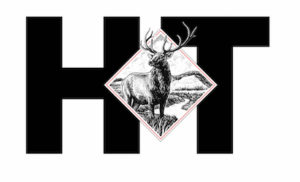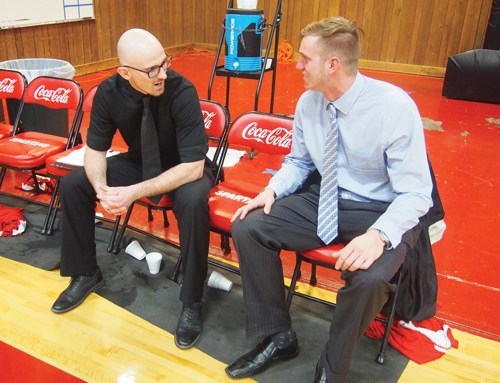By Jay Sullivan, Ph.D.
Special to the Herald Times
RBC | The Dec. 29 Herald Times carried an article in which the BLM is seeking comment on a plan to improve Greater Sage Grouse habitat. The article stipulated that juniper and pinion trees were a cause of the decline of the Greater Sage Grouse populations in Western Colorado. It may be one of the causes of Grouse decline but the story is much bigger.
In the spring of 2016, Dr. Asem Bakkar, Reed Kelley and I went in search of a Greater Sage Grouse Lek. Dr. Bakkar is a surgeon. Reed Kelley holds a Master’s Degree from Duke University in environmental science. I have a Ph.D. in social science research from the University of Denver. I’m also a wildlife artist.
Our rendezvous was before dawn at the Meeker Kum ‘n’ Go. A weather front was moving in from the south. Winds were fierce. Kelley made the offhand comment that the birds would probably be at the lek site because they were pretty committed to it. What he didn’t say was why they were committed.
The Greater Sage Grouse lek is the bird’s mating ground. Every year the birds return to the same location to mate. The females hold strong fidelity to the males and return to the same location year after year to mate with the same male. Each male at the site establishes his territory by defending a “bubble” from which he drives all other male contenders. The closer to the center of the lek the higher in the hierarchy rises the male’s status.
The word lek is a Swedish word. It’s meaning is to engage in pleasurable play without boundaries or rules. Leks cross boundaries. Although lekking is most prevalent among avian species, lekking behavior is found in insects, amphibians, and mammals as well. Hence the definition, “A lek is an aggregation of males that gather to engage in competitive displays that may entice visiting females who are surveying prospective partners for copulation.” (Wikipedia)
The drive to the lek site was about 45 minutes north from our rendezvous. I was driving, Kelley was navigating and Bakkar was entertaining us with some interesting tales of how certain surgeries are accomplished, how modern surgery is developing new and better techniques as well as some insights into different global cultures. As the sun rose and daylight began to reveal the early morning migrations of deer, elk and antelope our conversation shifted to what makes us different from the animals.
Bakkar forwarded the observation that our ability to think sets us apart from the animal. We all agreed that the more we are out in nature and observing wildlife while hiking or hunting we have increasing respect for the animal’s ability to react to situations. Whether it is in their nature, learned behavior or an ability to reason animals do some amazing things to ensure their survival. Bakkar mentioned that one of his skills that he attributes to his grandmother that makes him a surgeon is his ability to sew. He is a tailor stitching people together. His medical education and life experience give him the tools to be an excellent surgeon.
But it is our connections to one another that bring us together to create societal, cultural and community relationships that ensure our survival. A part of our thinking is the belief that growth is good for our financial futures. Surgeons, for example, provide a service. In performing that service surgeons need the support and assistance of others. Hospital staff, medical suppliers, facilities all benefit from the surgeon’s skills. As consumers it is rare that we pay for only one thing. On a daily basis we pay for the necessities of food, clothing and shelter along with transportation. It is a largely accepted belief that growth produces more resources with which to purchase not only necessities but things we want as well.
If growth is good for our financial future is it not also good for the future of a Greater Sage Grouse? Imagine the impact, for example, of residential building and energy development on the populations of the Greater Sage Grouse. Residential building and energy development have caused the greater sage-grouse population to decline from 16 million 100 years ago to between 200,000 and 500,000 today.
In a series of Nevada studies, artificial nest predation experiments were conducted. Artificial nests experienced 100 percent mortality with the loss of 1,400 eggs in 200 simulated nests in two weeks in one study, 84 percent of the nests were destroyed in three days in another study, while just 3 percent of the nests were destroyed in 10 days in an area of significantly better cover.
This decline in population has a domino effect. What, and perhaps who, does the Greater Sage Grouse support. Is the bird like a surgeon? Those dependent on the Greater Sage Grouse are those that inhabit the same territory. Perhaps a good beginning is in the answer to the question of who eats chicken? Predator species include coyote, bobcat, American badger, falcons, hawks and eagles prey on adults and juveniles. Crows and ravens and magpies consume juvenile birds. Coyotes, ground squirrels and badgers are the most important mammalian nest predators. Among bird species, magpies and ravens commonly prey on Greater Sage Grouse nests.
Greater Sage Grouse are a popular game bird. Therefore we should also include hunters among the predators that plague the bird. Mortality due to hunting is generally considered to be compensatory and replacive, where until mortality reaches a “threshold value,” it has no effect on population levels. Data are not available to suggest that closed or restricted hunting seasons will materially affect overall population levels on their primary range.
The Greater Sage Grouse is listed as a species in decline. Its populations are not growing. Each year fewer birds can be found. The largest impact is from loss of habitat. It may not be too much longer before we can no longer see the Greater Sage Grouse play without boundaries, put on mating displays or even feed those who like chicken.
There is a tremendous amount that we can do. Action needs to be defined by what Asem Bakkar observes is our human ability to think. Reaction without careful consideration of impacts within and across species does more harm than good. Can you think like a Greater Sage Grouse? Perhaps it sounds funny to think that to create effective positive change we need to consider the question, “What would a Greater Sage Grouse do if a Greater Sage Grouse could?”
Included in this story is a drawing of the Greater Sage Grouse. It will reflect what we have enjoyed seeing 300 booming Greater Sage Grouse with pointed tail feathers and inflated chests strutting in the lek.





















